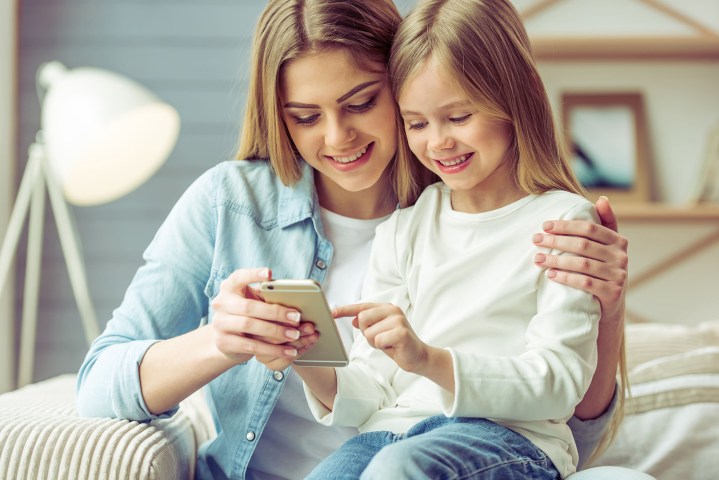
The American Academy of Pediatrics recommends children watch no more than one or two hours of television each day, so it’s feasible they would suggest the same for using an iPhone. Too much sensory stimulation can be detrimental to a child’s developing brain, and it’s something parents need to keep in mind when shuffling their kids from computer, to TV, to iPhone, to Xbox. Experts agree that children who are glued to the TV or play too many video games end up having more difficulty learning. Excessive use of electronics can even lead to sullen or aggressive behavior, so it’s definitely a good idea to limit your kids’ iPhone usage. Understanding the need to set barriers is undoubtedly the easy part. Actually enforcing those limits is a different story altogether.
Fortunately, there are a variety ways to curb iPhone usage, whether you prefer to simply talk to your kids, or implement software restrictions directly on the smartphone. Below are a few of our favorite methods, because no kid — or adult, for that matter — should waste the entirety of his or her day feverishly playing Pokemon Go or Super Mario Run.
Talk to your children
Start with a frank discussion with your child about the limits you are going to put in place. If your kid has been used to playing with your iPhone anytime she wants, and you suddenly grab it and say “Time’s up!” — you can imagine the ensuing temper tantrum that might follow. So, tell your child why you’ve decided to impose these time limits to help him/her better understand that it’s in their best interest.
Set rules and follow through
Establish and maintain time restrictions. In the event you have a stubborn child who balks at the idea of limiting his or her time with the iPhone, stand firm in your resolve. Don’t waver or give in when your kids begin making a fuss or resort to begging and bargaining. Doing so will likely only encourage them to maintain this course of action even longer the next time around. Also, explain what the consequences will be if he or she disobeys your time limits, and be consistent and straightforward.
Encourage outside activities
Encourage your kids to spend time outside whenever possible. Physical activities like riding bikes, playing tag, or swimming are always more beneficial than handing around inside. Let your child join a ballet class or soccer team. Plan play dates with other kids to go to the park or pool. When bad weather keeps you indoors, pull out the dusty board games and get the whole family involved. Try puzzles, scrapbooking, painting, or baking. You’re not a bad parent if there are days your kid plays with an iPhone, but, whenever possible, encourage them to spend time playing with educational apps instead of games. The key is balance and moderation, with a bit of flexibility thrown in.
Utilize an iOS app
Let’s face it, simply talking to your child and encouraging them to find entertainment elsewhere doesn’t always work out the way you want it to, especially if you spend a lot of your time in front of a TV, computer, or on your iPhone or iPad. There are apps for everything these days, though, including a selection specifically designed for monitoring and restricting your child’s iPhone usage. The two software apps below are just the tip of the iceberg.
Kidslox Screen Time Parental Control

Mobile Guardian

Enable passcode protection
If your kid is younger, or you simply want to block him or her from using your iPhone altogether, a basic four-number passcode will likely do the trick. Go to Settings > Touch ID & Passcode, then tap Turn Passcode On to set the security code. If you prefer, you can also enter a more elaborate password comprised of letters, numbers, and symbols. Just tap Passcode Options when setting up the passcode, and make sure to choose something other than your birthday.

Turn off in-app purchases
Frankly, turning off in-app purchases is something everyone with children should do. Doing so will prohibit your kids from making in-app purchases even if they know your password, and thankfully, it’s also incredibly easy to do. Go to Settings > General > Restrictions. Tap Enable Restrictions if they’re currently off, and enter your passcode when prompted. Scroll down once more and toggle off In-App Purchases.

Implement Guided Access
In a nutshell, Guided Access is the perfect tool for parents. The innate feature conveniently limits your device to a single app and allows you to control which app features are available, while giving you options for disabling hardware buttons and areas of the display that might not be relevant to a task.
To enable Guided Access, go to Settings > General > Accessibility, then scroll of the bottom of the page and tap Guided Access. Toggle the feature on before setting a passcode, settings alarms for time limits, and toggling Accessibility Shortcut on.

Once enabled, navigate to the app you want to lock and triple-click the Home button. From there, you can choose any part of the app you don’t want to be accessible. If you tap Options, you can also limit other facets such as volume, the home button, and your smartphone’s touch capabilities. Tap Done once you’ve set your restrictions, thus requiring your child, or you, to enter a passcode whenever they wish to exit the app and use your phone.


